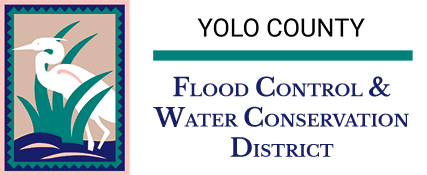Groundwater management has always been central to the District’s mission, in fact, monitoring and reporting on groundwater conditions is included in the legislation that created the District. Groundwater is an extremely important resource within the District, and to Yolo County. In an average rainfall year, approximately one-half of the water used for irrigation within the District boundaries is pumped groundwater. This percentage greatly increases during droughts when surface water is unavailable or in short supply.
The case for groundwater management is quite compelling because aquifers provide regional drought protection without the costs of constructing dams. Reservoirs have the advantage of being able to store large amounts of storm water in a very short period of time, but these sources are subject to evaporation and loss of capacity from sedimentation. Dam construction has land, material, and considerable labor costs, none of which is needed in naturally occurring aquifers. Another important benefit is that losses to evaporation are avoided with underground water storage. Evaporation losses are especially significant in shallow bodies of water such as Clear Lake, where half of the stored water is lost to evaporation in an average year. Aquifers can store water indefinitely and without the need to build additional infrastructure, but groundwater supplies take time to recharge.
Many parts of Yolo County have abundant groundwater supplies, but persistent drought years place extra demands on aquifers without winter rains and other surface water sources to replenish them. Without proper management, over pumping of groundwater supplies can cause subsidence and compaction, ultimately reducing the capacity of the aquifers forever. Subsidence not only wreaks havoc on infrastructure such as roads, pipes and building foundations, but it also results in a permanent loss of aquifer capacity. Subsidence in Yolo County is not just a theoretical issue, as a 2017 Department of Water Resources study found that ten areas near Zamora and Woodland experienced between 9-12 inches of subsidence between 2008 and 2017. The District works to bolster aquifer health by encouraging the use of surface water instead of groundwater when it is available and implementing projects that actively recharge groundwater supplies.
You can learn more about the District’s groundwater monitoring and management activities by clicking the buttons below.
